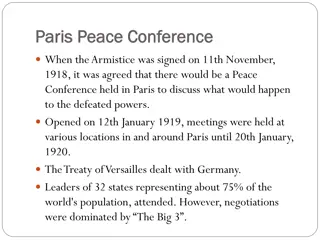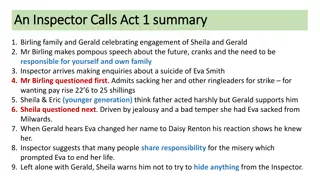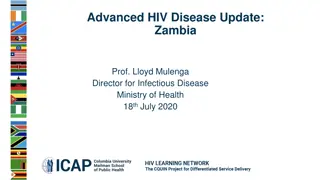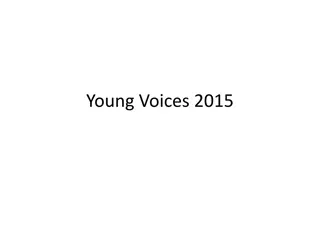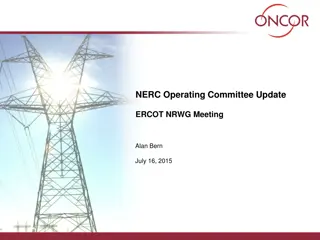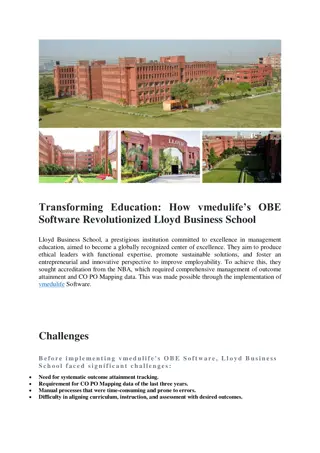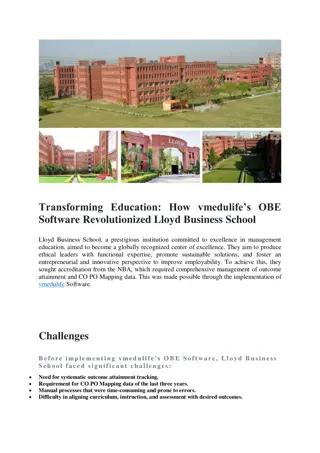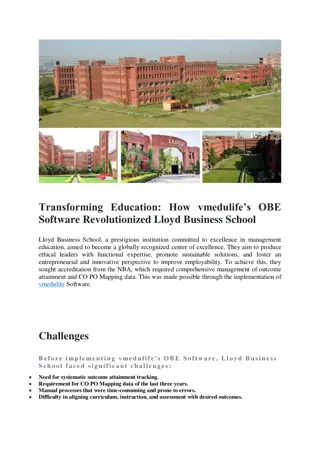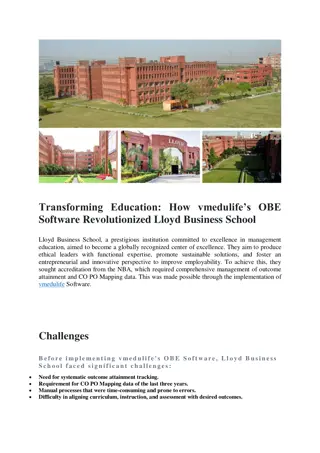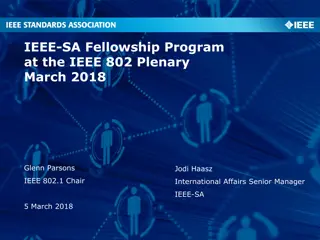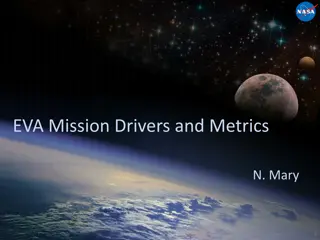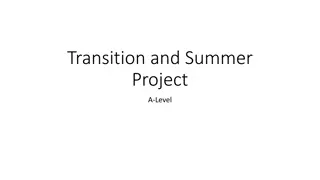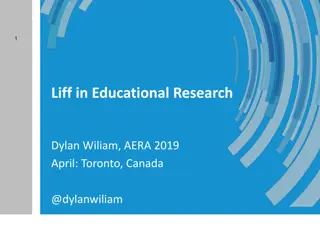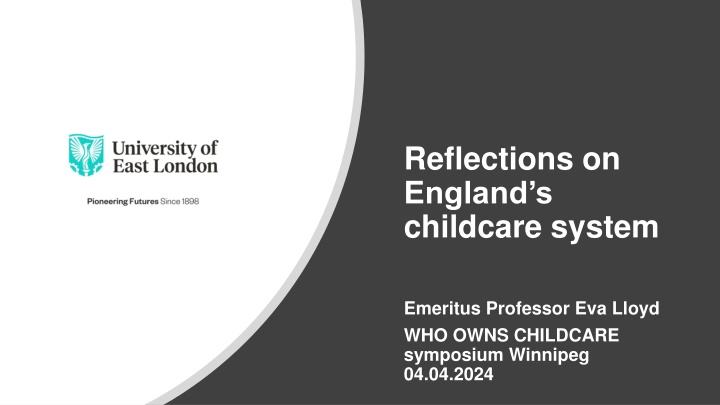
Insights into England's Childcare System: A Look at Early Education and Care Provision
Explore the complexities of England's childcare system, focusing on early education and care provision for children aged 0 to 5. Discover the challenges and disparities in access to ECEC, the evolution of private childcare, and the funding mechanisms supporting early education and childcare services.
Download Presentation

Please find below an Image/Link to download the presentation.
The content on the website is provided AS IS for your information and personal use only. It may not be sold, licensed, or shared on other websites without obtaining consent from the author. If you encounter any issues during the download, it is possible that the publisher has removed the file from their server.
You are allowed to download the files provided on this website for personal or commercial use, subject to the condition that they are used lawfully. All files are the property of their respective owners.
The content on the website is provided AS IS for your information and personal use only. It may not be sold, licensed, or shared on other websites without obtaining consent from the author.
E N D
Presentation Transcript
Reflections on England s childcare system Emeritus Professor Eva Lloyd WHO OWNS CHILDCARE symposium Winnipeg 04.04.2024
Englands early childhood education and care England s early childhood education and care (ECEC) system (ECEC) system Children aged 0 to 5 in England do not have a right to a place in ECEC provision Directly funded ECEC access determined by age or parental employment status access to ECEC paid for by parents, with or without state support, determined by its availability and affordability 89% of children aged 3 and 4 in some form of formal childcare ; 57% of 2-year-olds; 40% of 1-year olds and 7% of infants under 1 (DfE, 2023) Uneven distribution of provision: nearly half of under-fives live in childcare deserts (NEF, 2023) 1
Private childcare: evolution and nature Private childcare: evolution and nature Public and non-profits: in response to perceived need (Penn, 2009) For-profits: in response to parental demand (Willekens et al., 2015) Non-profits: community focus, open to children in poverty or with other additional needs Non-profits: superior quality in comparison to for-profits (Sosinsky et al., 2007; Cleveland and Krashinsky, 2009; Brogaard and Petersen, 2022) Pursuit of social impact not invariably associated with non-profit status, e.g. British public schools, charities, morphing into elite institutions over time (Penn, 2024) (Verkaik, 2018) 2
Englands early education and care provision England s early education and care provision Main types of ECEC delivery partners: 1. Public sector: nursery classes state schools, academies/multi- academy trusts state nursery schools 2. Private sector: non-profits and for-profits, including large chains; family daycare, i.e. childminders 2023 figures : 2/3rds of children receive directly funded hours in private settings, version 1/3rd in public settings 6000 non-profits versus 14.200 for-profits 11% non-profits part of a chain v 43% of for-profits (Group-based providers, excludes childminders) 5 school starting age; 4 entry to Reception class 3
Early education and childcare funding Early education and childcare funding Provider - supply-side - subsidies 15 universal childcare hours weekly during term time for 3- and 4-year-olds since 2010 30 targeted childcare hours weekly during term time for 3- and 4-year-olds with employed parents since 2017 15 targeted childcare hours weekly during term-time for disadvantaged 2-year-olds since 2013 2023 proposals 15 targeted childcare hours for all 2-year-olds with employed parents from April 2024 15 targeted childcare hours for all children aged 9 months to 5 years with employed parents from September 2024 30 targeted childcare hours for all children from 9 months with working parents from September 2025 Parental demand-side - subsidies Tax-free Childcare, up to 2000 annually per child; no parent earns over 100.000 in dual earner or single parent family (HM Gov, 2024) Childcare support under Universal Credit, part of the Benefits system (HM Gov., 2024) Retrospective payments of UC childcare support changed to upfront in 2023 Over last decade increase in spending on funded early education in England four times larger than childcare spending through the tax and benefits system Likely implications of roll-out of childcare expansion programme (Farquharson, 2024) (Lloyd, 2020a) (Farquharson, 2019) 4
Non Non- - and for and for- -profit childcare business models profit childcare business models Non-profits: Charities, registered with Charity Commission for England and Wales , including church-led institutions social enterprises, registered with Charity Commission or Office of the Regulator for Community Interest Companies charitable incorporated organisations, like Acorn Early Years Foundation, registered at Companies House and with the Charity Commission Co-operatives: non-profit limited companies For-profits: Ltd companies; National Partnership of Early Learning and Childcare 5
The impact of public funding The impact of public funding Introduction of public funding, regulation and governance support: step-change in nature of childcare markets Public funding boosts presence for-profits and large for-profit chains in childcare markets Within federal nations, balance between non-profit and for-profit provision may vary, viz. Canada England s childcare market skewed towards for-profits even during Labour administrations Result of market consolidation in England over the last two decades: stagnant or falling number of places and increase in financialized large chains, i.e. heavily indebted due to private equity loans (Simon et al., 2022;Garcia and Stewart, 2024)6 (Lloyd, 2019) (Prentice and White, 2019) (Beach et al., 2023) (Lloyd, 2018)
Nations resistance to for Nations resistance to for- -profit dominance profit dominance Different policy, fiscal and socio-cultural contexts impact on prevalence and survival of non-profits when for-profits dominant Changing public opinion, itself influenced by advocacy movements, may come to favour non-profits German s traditional non-profit sector major barrier to public subsidisation of for-profits The Netherlands traditionally dominant non-profit sector loses ground to for-profits (Akg nd z and Plantenga, 2014; Hoefsloot et al., 2023) Governments in Hong Kong (Rao and Lau, 2019) and Singapore (Bull and Bautista, 2018; Lim and Sum, 2022) now encouraging non-profits (Busemayer et al., 2020) (Kelle and Mierendorf, 2020) 7
Shifts between non Shifts between non- -profits and for Case of Australian childcare market over last three decades illustration of relationship between political change and rapid shifts between for-profits and non-profits 2008 collapse of Australia s largest and USA s second largest for-profit provider ABC Learning Prompt for government s reconceptualization of childcare as a public good and towards non-profits Political change driver of return to view of childcare as commodified necessity (Woodrow and Press, 2018, p. 548; Tayler et al., 2018) Under current regulatory conditions childcare market not delivering affordability and accessibility (Australian Competition & Consumer Commission, 2024) profits and for- -profits profits (Sumsion, 2012) 8
English childcare market pressures English childcare market pressures English childcare market increasingly fragile and unsustainable due to lack of appropriate regulation, deficient funding models and insufficient funding levels For-profits: profit before purpose via parental fee hikes and growing unsustainable debts to private equity firms; at risk of collapse; access restricted to better-off 2023 supply-side childcare subsidy 10% lower than 10 years ago Non-profits: limited borrowing potential and requirement to reinvest most of any surplus; better workforce pay; if unsustainable, poor children and those with additional needs lose access to ECEC Huge childcare retention and recruitment crisis affecting whole market (Lloyd, 2020b) (Davies, 2024) (Drayton and Farquharson, 2023) (Lloyd and Simon, 2022) (Hardy et al., 2023) 9
The size of the challenge The size of the challenge Between 2018 and 2022 one third of non-profits in disadvantaged areas in England closed or taken over by private companies, including private equity firms Likely result of current British government childcare expansion programme: socially segregated ECEC and disadvantaged children locked out (House of Commons Education Committee, 2023) Childcare workforce must be a primary beneficiary of improved childcare policies (Social Mobility Commission, 2020) Make priority group for targeting with quality non-profit childcare: the under-fives among the around 1 million children in the UK experiencing destitution in 2022, a 300% rise since 2017 (Garcia and Topping, 2023) (JRF, 2024) 10
Creating guardrails around for Creating guardrails around for- -profits 2024 report Joseph Rowntree Foundation, England s largest independent social change organisation: social contract between childcare providers and government to drive up standards and increase access 2021 Irish Republic introduced conditionality attached to new additional form of supply-side funding after extensive review of its childcare funding model England s Early Education and Childcare Coalition: agreed position on need for conditionality and public good approach to childcare, though not yet clear on role of public provision within the market Need to learn lessons on how to support non-profits in thin markets (Cleveland and Krashinsky, 2009); extra support for non-profits, starting with disadvantaged areas profits (Jitendra. 2024) (Lloyd, 2023) (Statham et al., 2022) 11
Englands childcare market: rescue and reform England s childcare market: rescue and reform 1. Improve workforce remuneration and employment conditions through increased public management 2. Increase supply-side subsidy levels to reflect real delivery costs; introduce parental fee caps 3. Introduce income-related parental fees, paid direct to providers 4. Reform Ofsted (inspection body) data collection for greater transparency regarding spending of public funds 5. Hold national debate regarding role of private equity in private for- profit early education and care provision and find ways of promoting non-profits like Denmark and Iceland have done (Lloyd, 2023) (Penn, 2023) (Traetteberg et al., 2021) 12
Contact details Email: e.lloyd@uel.ac.uk Twitter: @EvaLloyd50 Profile: https://www.uel.ac.uk/staff/l/eva-lloyd Research Centre: https://www.uel.ac.uk/our-research/research- school-education-communities/international-centre-study-mixed- economy-childcare-icmec 14


